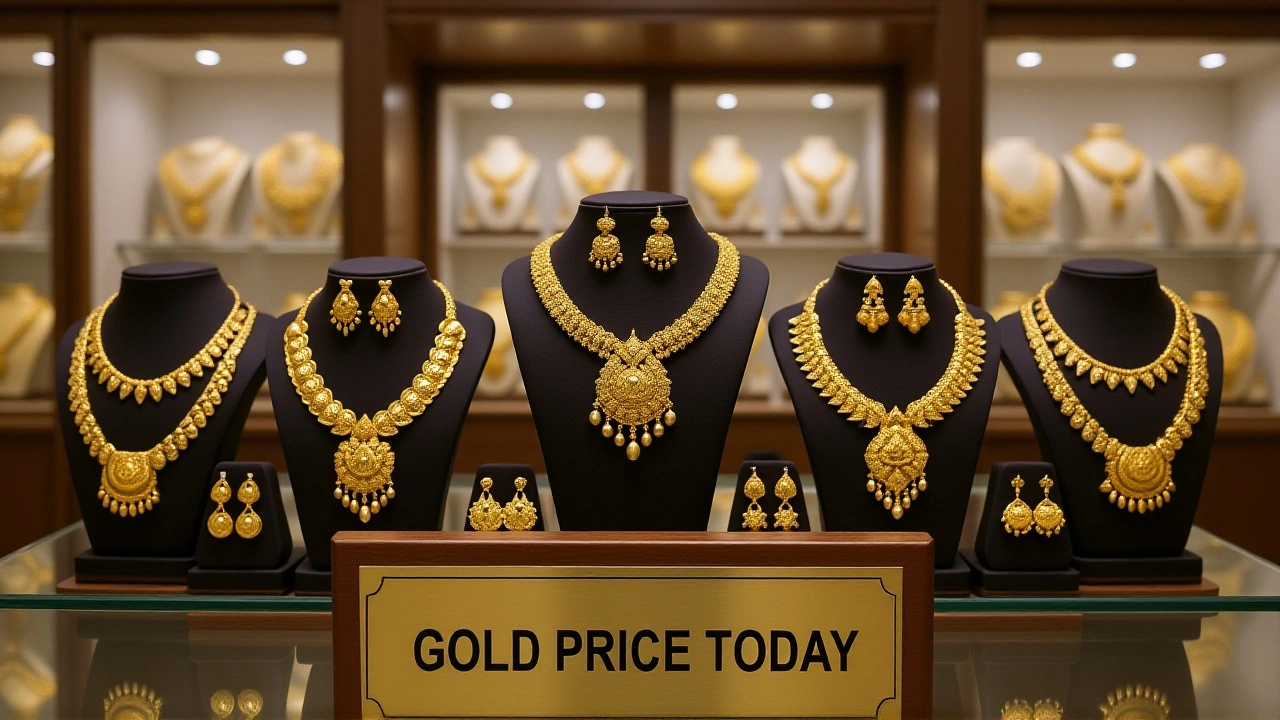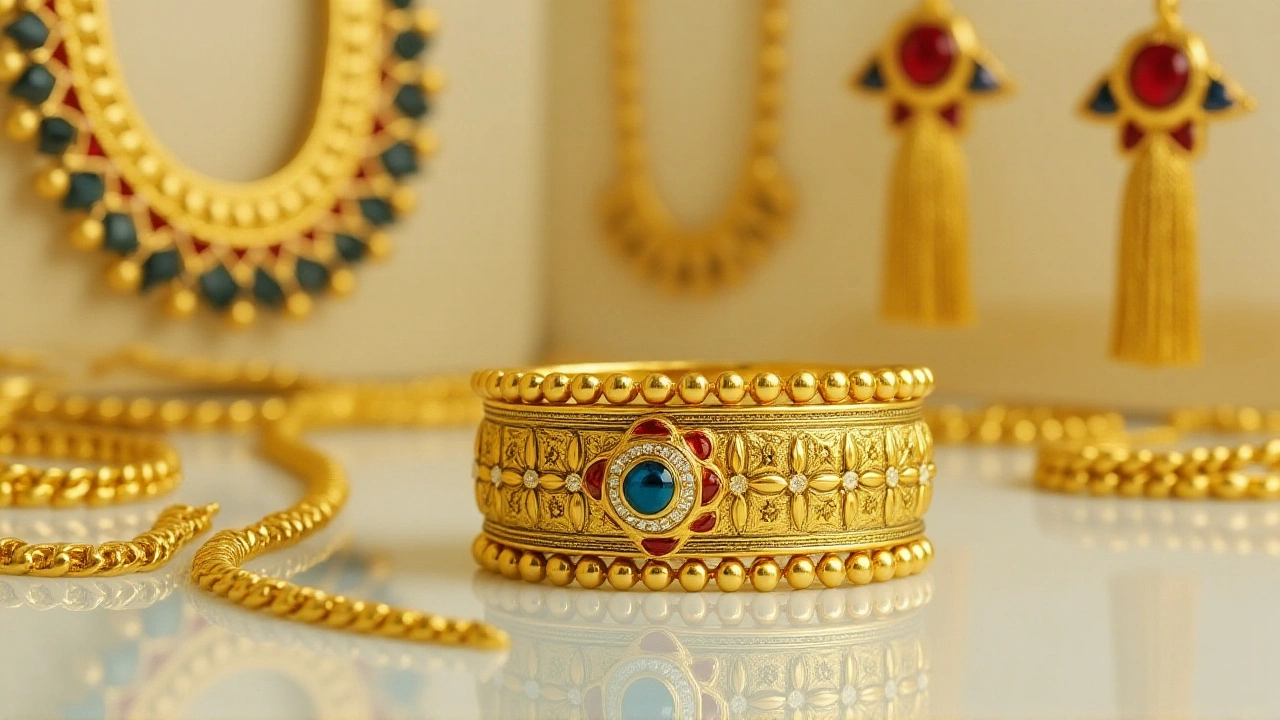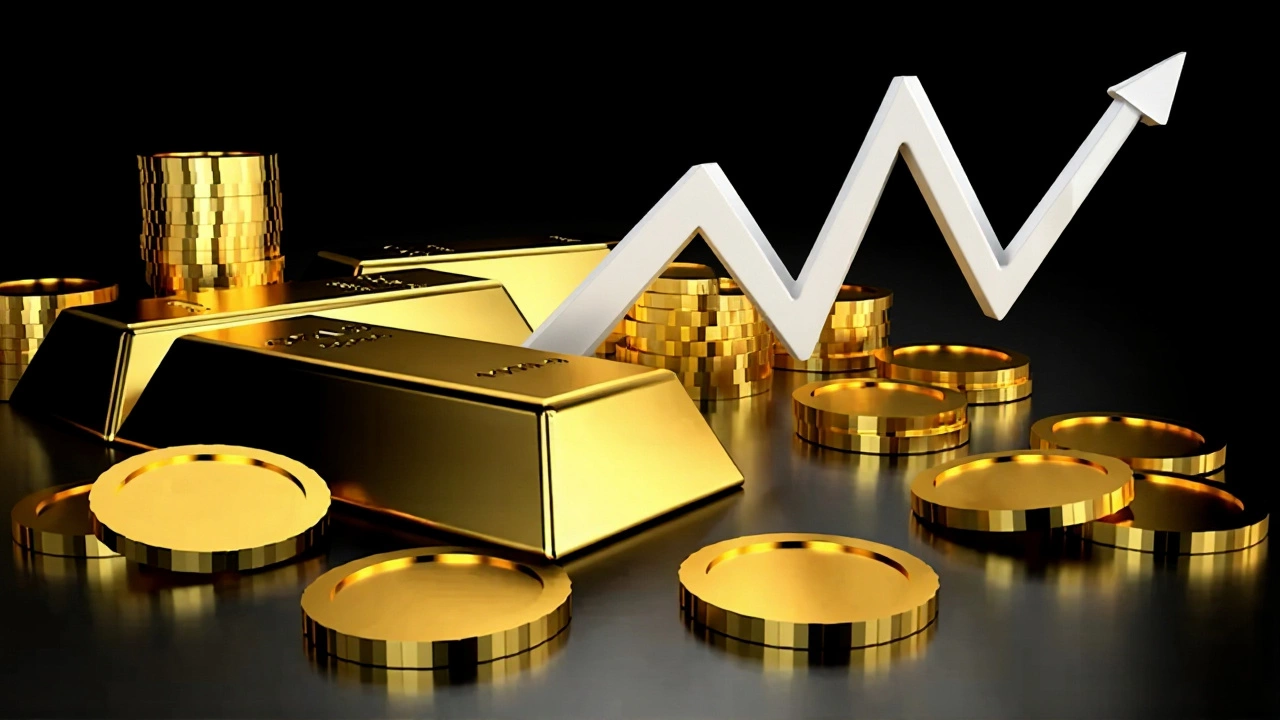When Ajay Kedia, principal partner at Kedia Advisory warned investors that today’s rally could flip, the Delhi Sarrafa Market was already buzzing with buyers chasing a record‑breaking price of ₹1,34,800 per 10 grams of 24‑carat gold.
This surge unfolded on Dhanteras 2025India, the traditional kickoff to the Diwali shopping season. According to the India Bullion & Jewellers Association (IBJA) and the All India Sarrafa Association, 24‑carat gold fetched ₹1,32,930 per 10 grams nationwide, while 22‑carat gold settled at ₹1,21,860.
Why Prices Are Skyrocketing
Analysts point to a two‑pronged driver. First, domestic demand is ferocious: weddings, Diwali gifts, and the age‑old belief that gold brings prosperity have all converged on this festive window. Second, global central banks continue to hoard the metal as an inflation hedge, with India’s own Reserve Bank among the top purchasers. The World Gold Council recently noted that institutional buying accounts for roughly 40 % of the year‑to‑date price rise.
On the ground, retailers in Delhi, Mumbai, Pune, Chennai, Jaipur, Ahmedabad, Lucknow, Patna and Kolkata reported footfall that eclipsed last year’s figures by 28 %. Yet shoppers are gravitating toward lighter pieces—gold coins, thin chains, and small bangles—because the heft of traditional heirloom jewellery would strain many households’ cash‑flow.
Numbers That Tell the Story
- 24‑carat gold: ₹1,32,930 per 10 g (national average)
- 22‑carat gold: ₹1,21,860 per 10 g (national average)
- Silver (999 purity): ₹1,77,000 per kilogram in Delhi
- Year‑on‑year gold price rise: 63 % vs. Dhanteras 2024 (₹78,840 per 10 g)
- Projected total sales this season: >₹50,000 crore across gold and silver
Those sales translate to roughly 25 tons of gold—valued at about ₹32,500 crore—and 1,000 tons of silver, worth around ₹18,000 crore. Madhya Pradesh alone is expected to generate ₹25,000‑30,000 crore in turnover, a 25‑30 % jump from the previous year.

Expert Take: A Possible Correction?
"Technical charts show that gold has been bought in quantities exceeding expectations, which usually signals a pull‑back," Kedia said in an interview. He cautioned that a 10‑12 % correction after Dhanteras is plausible, especially if the post‑festival demand dip aligns with the usual seasonal slowdown.
Still, he stopped short of a definitive call. "Nothing can be said for certain given current market dynamics," he added, noting that a similar 10 % dip occurred in April‑May 2025 after an earlier rally.
For those who prefer a less volatile play, Kedia advised a shift toward base metals. "Copper, zinc and steel are showing healthier price‑earnings ratios right now," he suggested, pointing to a 4.2 % rise in copper futures over the past month.
What This Means for the Average Buyer
The price spike is a double‑edged sword. On one side, homeowners see their existing gold holdings swell in value—an attractive buffer against inflation. On the other, first‑time buyers face an entry barrier that feels like a steep hill.
Middle‑class families, who traditionally allocate a modest portion of their Diwali budget to gold, are now reallocating funds to lighter jewelry or even to gold‑backed financial products like sovereign gold bonds. In Delhi, jewelers reported a 42 % increase in gold‑coin sales compared with the same period last year.

Looking Ahead: 2026 and Beyond
If central‑bank buying stays on its current trajectory, the Confederation of All India Traders (CAIT) and the All India Jewelers and Goldsmith Federation (AIGGF) project that gold could breach the ₹1,50,000 mark per 10 g by Dhanteras 2026—a 15 % jump from today’s levels.
That forecast hinges on two variables: continued institutional buying and the resilience of Indian festive demand. Should geopolitical tensions ease or inflationary pressures subside, the bullish trend could lose steam, prompting a sharper correction.
Frequently Asked Questions
How will the gold price surge affect middle‑class families?
Existing gold assets will see a noticeable rise in value, giving families a modest hedge against rising food and fuel costs. However, buying new gold at ₹1.35 lakh per 10 g pushes many first‑time buyers toward lighter pieces or alternative investments, stretching household budgets during the festive season.
What are the main reasons behind the 63 % year‑on‑year price jump?
Two forces dominate: a surge in domestic demand linked to weddings and Diwali gifting, and aggressive purchasing by central banks worldwide, including the Reserve Bank of India, which together have lifted demand beyond supply constraints.
Is a post‑Dhanteras correction likely?
Commodity expert Ajay Kedia estimates a 10‑12 % pull‑back after the festival, based on historical seasonal dips and recent technical chart signals. The exact magnitude will depend on whether institutional buying stays robust.
Should investors consider alternatives to gold right now?
Kedia recommends looking at base‑metal exposure—copper, zinc and steel—because they currently offer better risk‑adjusted returns and are less vulnerable to the speculative swings that are gripping the gold market.
What are the price expectations for gold in the next Dhanteras?
Industry bodies CAIT and AIGGF project that if central‑bank purchases continue at the current pace, gold could touch roughly ₹1,50,000 per 10 g by Dhanteras 2026, indicating a further 15 % increase over today’s prices.
